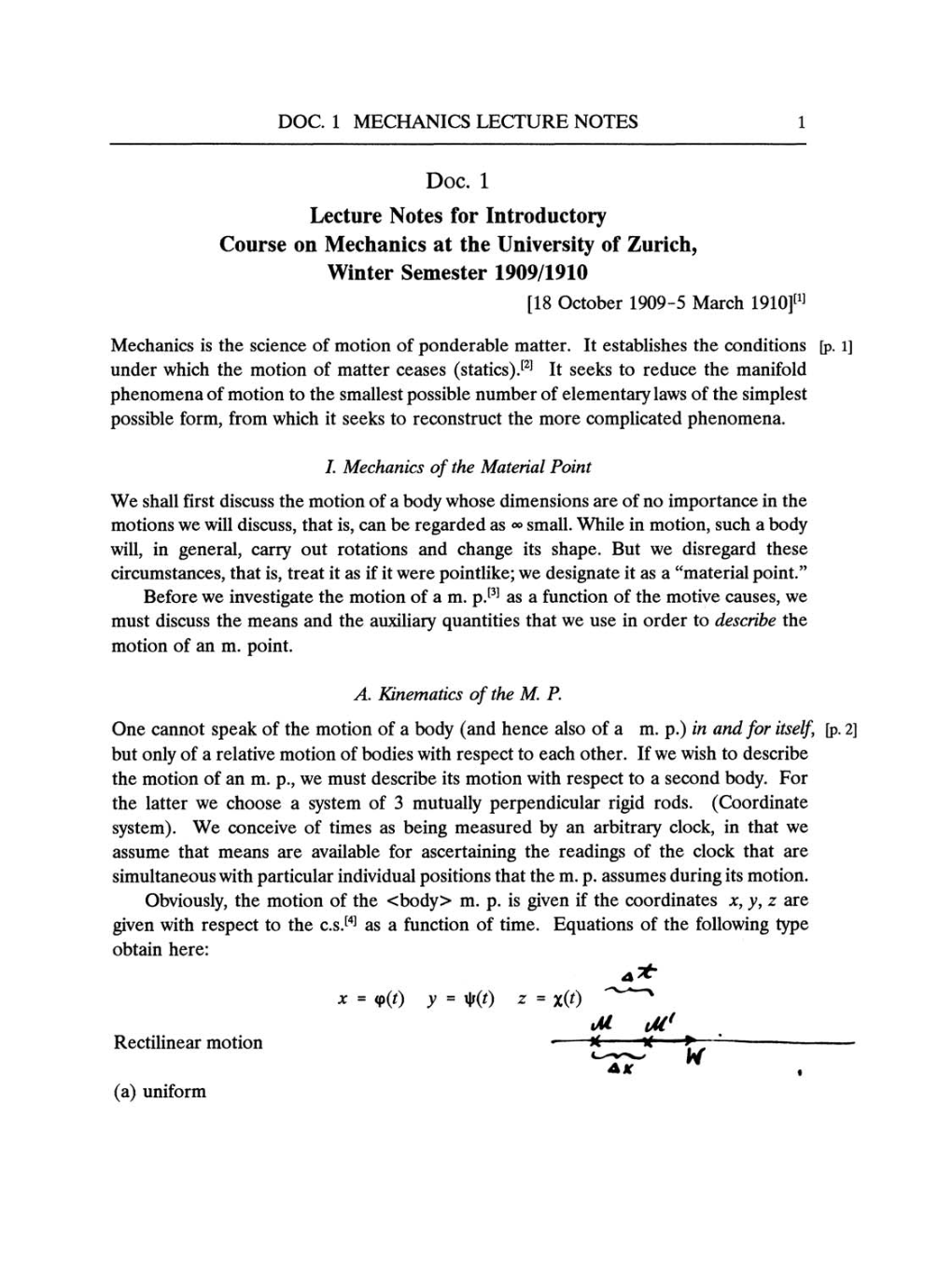DOC.
1
MECHANICS LECTURE NOTES
1
Doc.
1
Lecture
Notes
for
Introductory
Course
on
Mechanics
at
the
University
of
Zurich,
Winter
Semester
1909/1910
[18
October 1909-5 March
1910][1]
Mechanics
is
the
science
of motion of
ponderable matter.
It
establishes
the conditions
[p.
1]
under
which
the motion of
matter
ceases
(statics).[2]
It
seeks to
reduce the
manifold
phenomena
of
motion to
the
smallest
possible
number of
elementary laws
of
the
simplest
possible
form,
from
which
it
seeks
to
reconstruct
the
more complicated phenomena.
I.
Mechanics of
the
Material
Point
We shall
first
discuss
the motion of
a
body
whose
dimensions
are
of
no
importance
in
the
motions
we
will
discuss,
that
is,
can
be
regarded
as
»
small.
While in
motion,
such
a
body
will,
in
general,
carry
out
rotations and
change
its
shape.
But
we
disregard
these
circumstances,
that
is,
treat it
as
if
it
were
pointlike;
we designate
it
as a
"material
point."
Before
we
investigate
the motion of
a m.
p.[3]
as a
function
of the
motive
causes,
we
must discuss
the
means
and the
auxiliary
quantities
that
we use
in
order
to describe
the
motion of
an m.
point.
A.
Kinematics of
the M. P.
One
cannot
speak
of the motion of
a body
(and
hence
also
of
a m. p.)
in
and
for
itself,
[p. 2]
but
only
of
a
relative motion of
bodies with
respect
to each
other. If
we
wish to
describe
the motion of
an m. p., we
must
describe its
motion
with
respect
to
a
second
body.
For
the latter
we
choose
a system
of
3
mutually
perpendicular
rigid
rods.
(Coordinate
system).
We
conceive
of
times
as
being
measured
by
an
arbitrary
clock,
in
that
we
assume
that
means are
available
for
ascertaining
the
readings
of the
clock
that
are
simultaneous
with
particular
individual
positions
that the
m. p. assumes
during
its motion.
Obviously,
the motion of the
body
m. p.
is
given
if
the coordinates
x, y, z
are
given
with
respect
to
the
c.s.[4] as a
function
of
time.
Equations
of the
following type
obtain
here:
x
=
p
(t)
y
=
iK0
*
=
X(0
Rectilinear motion
(a)
uniform
